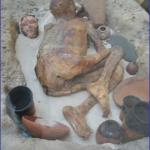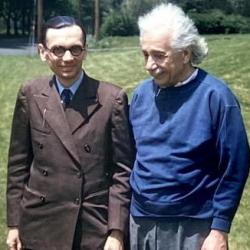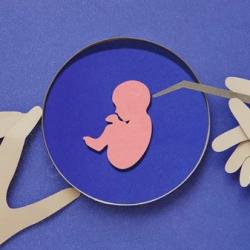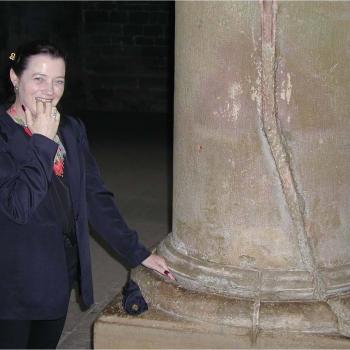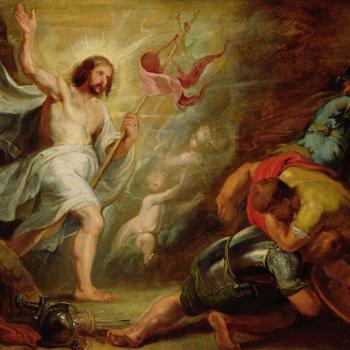ST 4113. Afterlife 3
Astral Body? Ka? or Angel?
The New Age Astral Body, the Egyptian Ka, and the Biblical Angelic Body

Trying to imagine death without death makes my brain hurt. What are the options? Previously we looked at the position taken by naturalists: “when yer dead, yer dead.” Atheistic materialists usually support this naturalist position. They deny any subjective consciousness beyond the moment of death.
Not everyone in human history has held this view. The ancient Egyptians imagined that each of us has a non-material second body called the ka. Our new age friends imagine that this second body is ethereal; it’s an astral body.
Afterlife in the Astral Body
The concept of the astral body or star body is distinct from that of the immortal soul. Yet, it too is dualistic. The astral body has a shape. It’s the shape of our physical body. But, being made of stardust, it is not solid nor is it ephemeral. It exists in the same space as our physical body. Occasionally in dreams and finally at death it separates from the body. It proceeds then on the path toward eternity.
I once spoke with a woman whose twenty-year old daughter was tragically killed in an auto accident. The surviving mother lived in Washington state while the deceased daughter had resided in Colorado. When the Colorado branch of the family met with the funeral director, the mother traveled from Washington to Colorado in her astral body to attend the meeting.
Our conversation took place amid this funeral planning period. The mother was uncontrollably distraught. Some weeks later, the mother telephoned me. She reported that her deceased daughter had appeared to her in her astral body. The daughter was accompanied by Jesus on her arm. “I’m gonna be alright, Mom,” the daughter said. Then, she and Jesus walked away and disappeared.
[For a penetrating look at today’s New Age movements, see my book, The Cosmic Self. First published by Harper, it’s now out of print. Knock-offs and used copies are readily available.][1]Afterlife as the Egyptian Ka
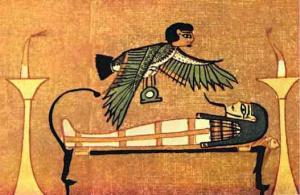 The predecessor for the idea of the astral body may have come from ancient Egypt. The wall paintings in the pyramids show a second form hovering near the physical body of the pharaoh, the ka. The ka was an immaterial double of the physical body. It would be the ka who would live on in the tomb to enjoy the kas of the toys left there for the afterlife.
The predecessor for the idea of the astral body may have come from ancient Egypt. The wall paintings in the pyramids show a second form hovering near the physical body of the pharaoh, the ka. The ka was an immaterial double of the physical body. It would be the ka who would live on in the tomb to enjoy the kas of the toys left there for the afterlife.
In today’s New Age spirituality, spiritual technicians teach methods whereby one can detach the astral body and fly from one geographical location to another. Astral travel saves money on air fares. When we die, the astral body makes its way up the ladder of being, passing through each of the seven heavens until it attains an immortality that includes absorption into the infinite.
In ancient Gnosticism this ascent through the seven heavens would lead to the ogdoad, the Empyrean, or heaven. Surviving death in the astral body may be a good way to beat death for a New Ager. But even better is dissolving like a drop into the ocean of mystical being.
On the one hand, New Age spirituality could be considered dualistic regarding the separation of the body from our true self. Yet the astral body belief could be considered monistic at entrance to the Empyrean where the self dissolves into the whole of reality. New Age mysticism is a spiritual monism, not a material monism.
Afterlife as an Angel
Would you like to become an angel in the afterlife? Your job as an angel would include, among other duties, singing te deums in a choir around the throne of God.
“And all the angels stood around the throne and around the elders and the four living creatures, and they fell on their faces before the throne and worshipped God, singing, ‘Amen! Blessing and glory and wisdom and thanksgiving and honour and power and might be to our God for ever and ever! Amen.” (Revelation 8:11-12)
![]() Angel [Greek ἄγγελος] literally means, “messenger.” When taking a break from choir rehearsal, you might be assigned the task of delivering a message from the eternal throne of grace to the rest of us mortals. It was a heavenly angel who delivered a message to shepherds on the first Christmas night that the Messiah had been born.
Angel [Greek ἄγγελος] literally means, “messenger.” When taking a break from choir rehearsal, you might be assigned the task of delivering a message from the eternal throne of grace to the rest of us mortals. It was a heavenly angel who delivered a message to shepherds on the first Christmas night that the Messiah had been born.
“The angel said to them, Do not be afraid; behold, I bring you good news of a great rejoicing for the whole people” (Luke 2:9).
Angels are depicted by artists and iconographers as having human—though immortal–bodies. Systematic theologian Thomas Aquinas (1225-1274) was not one of these artists. Thomas held that angels are intellectual substances who no longer need to acquire knowledge through their bodily senses. Therefore, angels are bodiless.[2]
Does it appear that when we become angelified after death that we become disembodied yet retain a bodily form? I still ask: how might an angel sing without vocal chords?
Angelification in the afterlife was believed by the Essenes [ Hebrew: אִסִּיִים], a Jewish sect who lived near the Dead Sea just prior to the time of Jesus. This idea of dying and becoming an angel was extant and widely believed by the people who heard Jesus’ teachings. “Historical Christianity inherited its belief in angels from Jewish spiritual ancestors.” says Patheos columnist Greg Smith. “Jewish angelology, in turn, owes much of its understanding to Egyptian, Babylonian, and Persian influence.”
Hindus have angels, according to Padma Kuppa. According to B.J. Oropeza, angels mediate between the divine and the human.
An important theological question is this: do people become angels in the afterlife? For the most part, angeologists presume that angels and humans are both creatures but of a different sort. Patheos columnist Coleman Glenn, however, points out that some biblical references can be interpreted to signify that these heavenly messangers are angelified humans. So, if you’d like to become angelified in the afterlife, start taking those voice lessons now.
Models of the Afterlife
What are the options? Here are the models of the afterlife we are looking at in this Patheos series on the afterlife.
- The Denial of Death
- Naturalism: When yer dead yer dead!
- Astral Body? Ka? Or Angel?
- Third Day Afterlife
- Immortal Soul
- Reincarnation
- Near Death Experiences
- Communication with the Dead
- Absorption into the Mystical Infinite
- Resurrection of the Body
Conclusion
When eulogizing a recently deceased sports coach at a memorial service, the team will typically hear the eulogizer say something like, “Coach is now looking down on us today.” Such rhetorical vacuity seems to presuppose a variant of angelification. Or at least astral presence. Typically, if we are on our best behavior, we do not ask metaphysical questions at a memorial service.
But, we like to ask metaphysical questions here. That’s our task as we review the options regarding belief in an afterlife.
What about belief in the immortality of the soul? We’ll look at the immortal soul after we’ve looked at a curiosity, namely, the widespread belief that the disembodied soul hangs around the family for three days after death.
▓
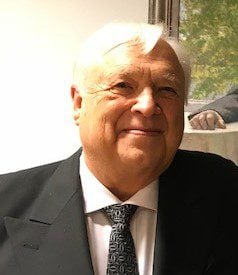
Ted Peters directs traffic at the intersection of science, religion, and ethics. For Patheos, he posts articles and notices in the field of Public Theology.
Peters is an emeritus professor at the Graduate Theological Union, where he co-edits the journal, Theology and Science, on behalf of the Center for Theology and the Natural Sciences, in Berkeley, California, USA. He authored Playing God? Genetic Determinism and Human Freedom? (Routledge, 2nd ed., 2002) as well as Science, Theology, and Ethics (Ashgate 2003). He is editor of AI and IA: Utopia or Extinction? (ATF 2019). Along with Arvin Gouw and Brian Patrick Green, he co-edited the new book, Religious Transhumanism and Its Critics hot off the press (Roman and Littlefield/Lexington, 2022). He has just published The Voice of Christian Public Theology (ATF 2022). See his website: TedsTimelyTake.com.
His fictional spy thriller, Cyrus Twelve, follows the twists and turns of a transhumanist plot.
Notes
[1] Astral escape from the body is not the primary form of afterlife for New Ageers. Reincarnation is. “The New Age movement understands death and the afterlife in a multitude of ways, but all forms of the New Age uphold belief in the continuation of the individual after death. Additionally, New Age practitioners tend to possess a generally positive view of death as merely a doorway to the next life…New Agers tend to view incarnation as a human being on earth as only one option for a reincarnating soul. Most New Age practitioners believe that souls can take life on a variety of planets and planes of existence.” See the Patheos series on Beliefs, “New Age: Afterlife and Salvation.”[2] “not all intellectual substances are united to bodies; but some are quite separated from bodies, and these we call angels.” St. Thomas Aquinas, Summa Theologica, Q51.



